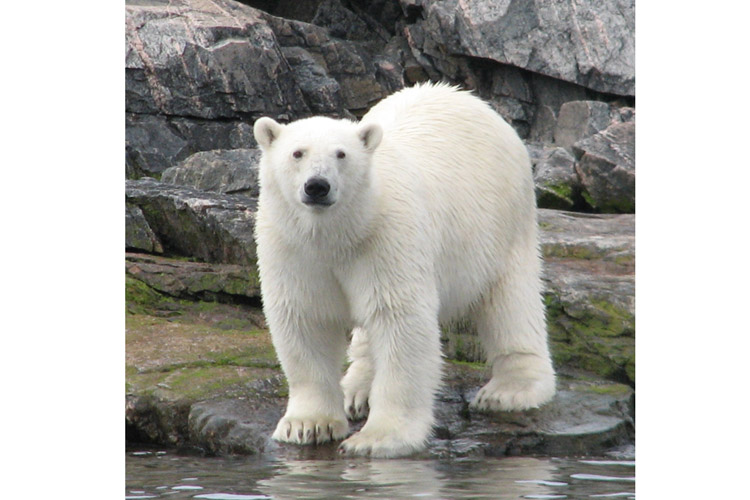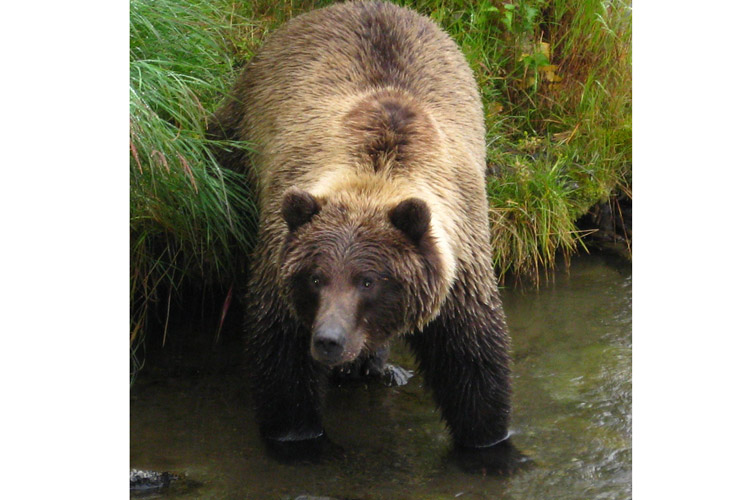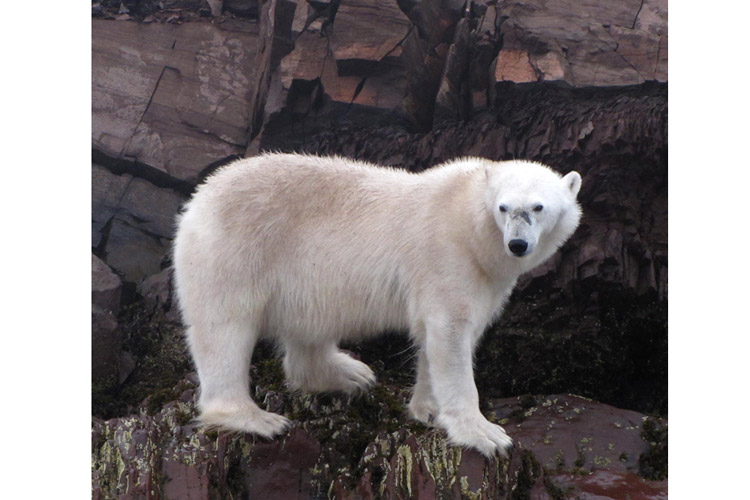It’s a ‘Bear’ of a Tale: Grizzly-Polar Bear Hybrid
Posted by Kevin Clement
in Of Interest and Polar Regions
Q: What do you call a bear that is relaxed and passive one minute, and agitated and aggressive the next?
A: A bipolar bear.
In April 2006, on remote Banks Island in the Canadian Arctic, sport hunter Jim Martell of Idaho shot a polar bear…or so he thought. It was seemingly a legal kill; he had purchased a polar bear tag from the Canadian government, which still allows this practice. But as he and his Inuit guides approached the carcass, they began to wonder just what he had actually killed.
The bear was mostly white…but had patches of brownish fur. It had the long neck of a Polar Bear… but there was also a distinct shoulder hump visible. The creature had huge Polar Bear paws…but the front ones sported uncharacteristically long claws. Its face in profile was more concave than it should be. In fact, from certain angles, the animal looked more like a Grizzly Bear.
Genetic testing would later confirm that the animal was, in fact, a hybrid (to the great relief of Mr. Martell, who had initially been charged with illegally shooting a Grizzly, for which he had no permit). This was an historic finding…but not because Grizzly/Polar Bear hybrids are unknown.
Zookeepers have known for many years that in a captive environment the two species can be induced to breed, successfully, and raise viable offspring. (Authorities are divided as to whether these progeny should be called “Pizzlies” or “Grolar Bears”.) Nobody doubts that these are two separate species, but clearly they diverged not long ago in evolutionary time, probably no more than 200,000 years. What was not known before this incident was that such a union could, or ever would, occur in the wild.
Moreover, it seems likely that this occurrence is yet another result of the changing Arctic environment, which is Ground Zero for climate change on Earth. As boreal forests encroach northward onto the tundra, Grizzlies are expanding their ranges in that direction. Meanwhile, diminishing sea ice is forcing Polar Bears onto land with increasing frequency.
The incident raises several more questions, which cannot be answered at present:
• Will we be seeing more and more hybrids like this one? If this one was discovered by accident, it probably indicates that there are many more out there in the wild.
• Is it possible that the two species will eventually merge back together through interbreeding?
• Should we rejoice in that possibility, since the Polar Bear’s genes would be in some way preserved even if the species went extinct due to the loss of its sea ice habitat?
• What is a species, anyway? If two animals that are clearly separate can interbreed this way, our old definitions don’t hold water.
• Given their differing mating habits and seasons, even if they were in geographic proximity, how did the crazy kids that became this bear’s parents get together?
One thing we can say for certain: the Arctic is a dynamic, finely-balanced environment, and it’s changing fast. Who knows what’ll happen next?
Learn more about our planet’s bear populations on our Arctic and Canada expeditions: Baffin Island & Greenland Tour and Canada Spirit Bears Tour.




